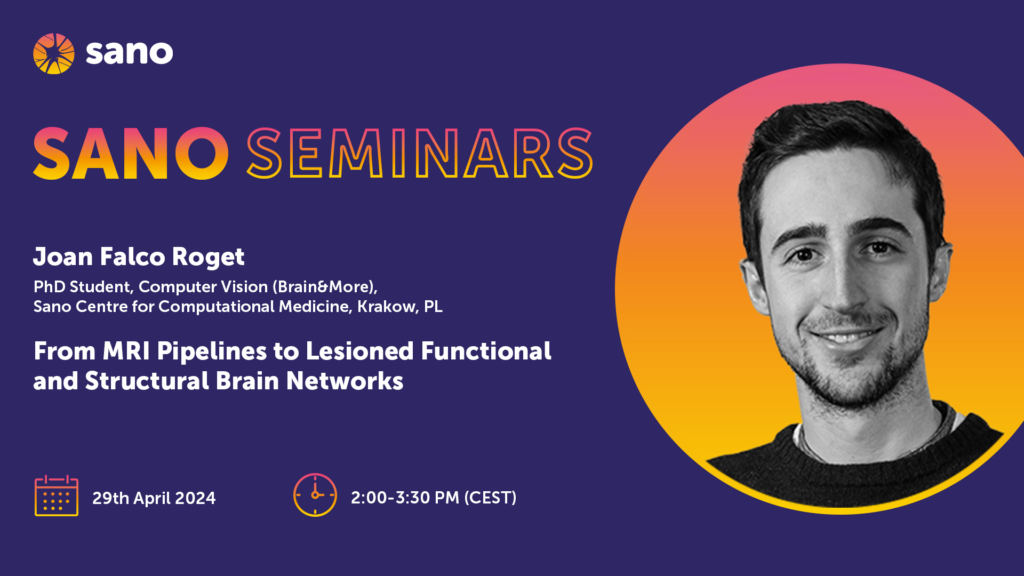131. From MRI pipelines to lesioned functional and structural brain networks
Joan Falco Roget – PhD Student, Computer Vision (Brain&More), Sano Centre for Computational Medicine, Krakow, PL
Abstract
Neuroimaging studies have allowed for non-invasive mapping of brain networks in brain tumors. Although tumor core and edema are easily identifiable using standard MRI acquisitions, imaging studies often neglect signals, structures, and functions within their presence. Therefore, both functional and diffusion signals and their relationship with global patterns of connectivity reorganization are poorly understood. Here, we explore the functional activity and the structure of white matter fibers considering the contribution of the whole tumor in a surgical context. First, we find intertwined alterations in the frequency domain of local and spatially distributed resting-state functional signals, potentially arising within the tumor. Second, we propose a fiber-tracking pipeline capable of using anatomical information while still reconstructing bundles in tumoral and peritumoral tissue. Finally, we predict structural rearrangement after surgery given the preoperative brain network using machine learning and healthy anatomical information. Overall, we show the importance of carefully designing studies including MR signals within damaged brain tissues, as they exhibit and relate to non-trivial patterns of structural and functional (dis-)connections or activity.
Furthermore, having set the stage for a particular case study, we wish to develop a closed formalism around causal interactions and perturbations in the brain using methods from dynamical systems reconstruction.
[1] Falcó-Roget, Cacciola, Sambataro, & Crimi. Communications Biology, 2024. www.nature.com/articles
[2] Falcó-Roget, Onicas, Akwasi-Sarpong, & Crimi. bioRxiv, 2023. www.biorxiv.org
About the author
Joan holds a Bachelor of Science in fundamental physics from the University of Barcelona and a Master of Science in physics of condensed matter and biological systems from the Autonomous University of Madrid. He researched computational theories of dopamine and animal behavior in Madrid before joining Sano as a PhD student. His current research is centered around neuroimaging studies and methods to study brain lesions and degenerative diseases.

